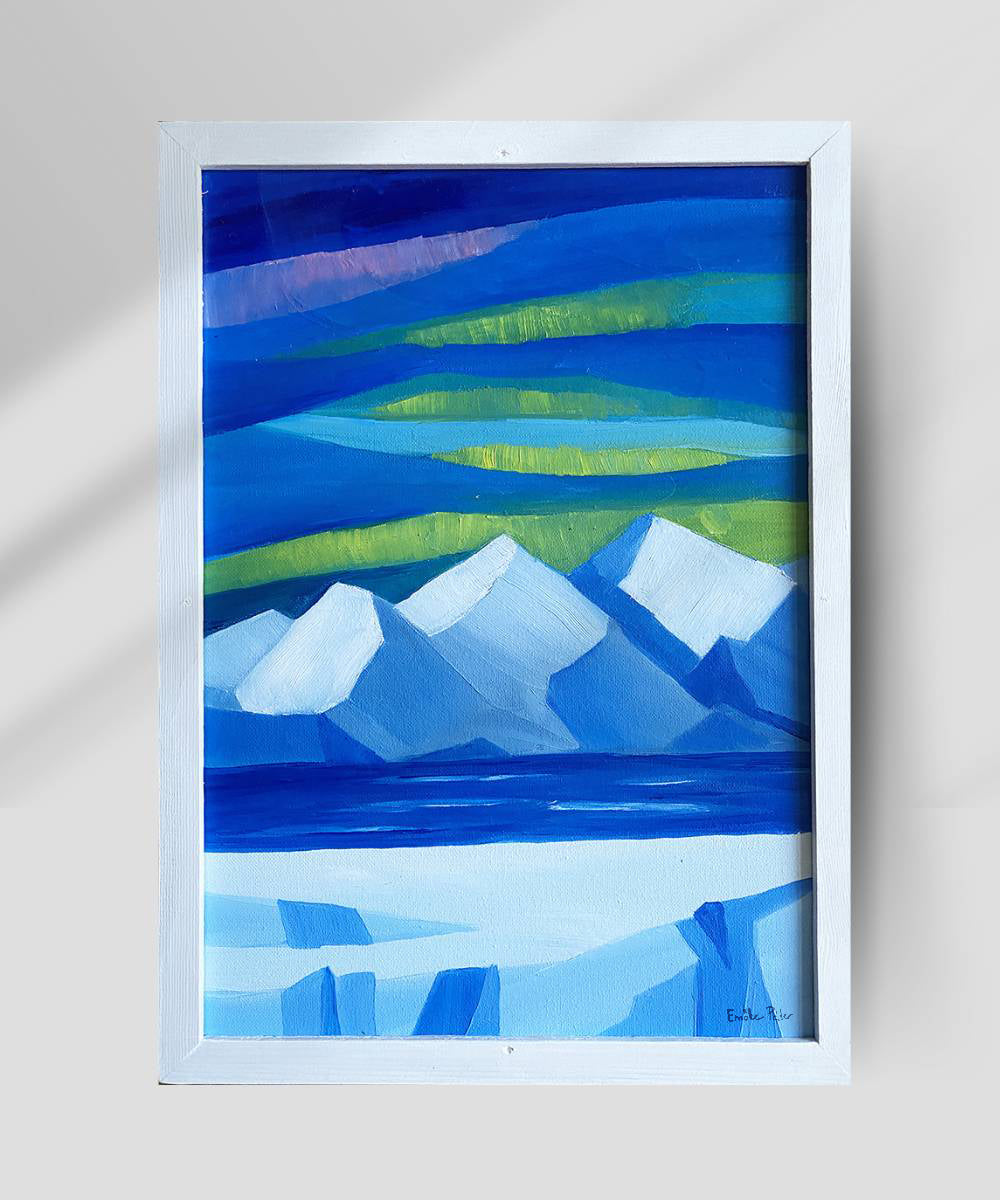
There is only one of this artwork in the world, guaranteeing the uniqueness of this painting, inspired by Captain Palmer’s fascinating travel stories.
The Story of the Aurora Borealis oil painting
During the harsh winter of 1892, Captain Palmer’s expedition ventured into the treacherous Arctic Circle, where his team established a temporary research station on the ice-covered shores of northern Norway. On a particularly clear January night, Palmer documented one of the most extraordinary phenomena of his extensive travels.
Palmer’s journal entries from this frigid evening reveal his initial astonishment at the sudden appearance of luminous curtains across the night sky. “The Aurora Borealis began as a faint glow on the northern horizon,” he wrote, “before expanding into undulating waves of light that illuminated our camp almost as bright as twilight.” The Captain, ever the meticulous observer, immediately began recording the colors and movements of the display.
Documenting the Aurora Borealis
With characteristic precision, Palmer sketched the changing formations of the Aurora Borealis, noting how the green and purple lights shifted and danced above the frozen landscape. His scientific curiosity led him to time the pulses and waves of the celestial display, hypothesizing about potential connections to magnetic phenomena that the Royal Geographical Society was beginning to study.
Arctic Exploration
Despite the bitter cold that threatened his ink with freezing, Palmer remained outside for hours, making constant observations. “There is perhaps no sight in all of nature that better rewards the hardships of Arctic exploration than witnessing the full splendor of the Aurora Borealis above these pristine ice fields,” he concluded.
This magnificent moment, faithfully recorded in Palmer’s expedition journals, inspired our painting “Aurora Borealis”— capturing the wonder of discovery in Earth’s most challenging environments.








